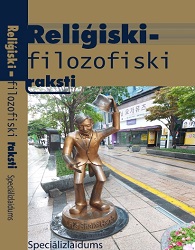Discovering Seoul in Celje: Image of Early Twentieth Century Seoul in Picture Postcards Brought by a Slovenian Traveller Alma Karlin
Discovering Seoul in Celje: Image of Early Twentieth Century Seoul in Picture Postcards Brought by a Slovenian Traveller Alma Karlin
Author(s): Byoung Yoong KangSubject(s): Cultural history, International relations/trade, Sociology of Culture, Interwar Period (1920 - 1939)
Published by: Latvijas Universitātes Filozofijas un socioloģijas institūts
Keywords: Alma Karlin; Celje; Seoul; picture postcards; image; imperialism; Korea; Japan;
Summary/Abstract: Alma Vilibalda Maximiliana Karlin (1889-1950) was one of world-famous Slovenians who was a traveller, writer, poet, collector, polyglot and theosophist. She is especially renowned as an explorer who has made a journey around the world between 1919 and 1927. On her way, she visited Korea by boat, crossing from Japan. It is known that Karlin travelled from Busan to Pyeongyang in 1923 and explored the Korean peninsula, as well as observed the people therein. The collection obtained from her souvenirs is currently stored in Celje, her hometown. These items include the postcards depicting the 1910s Seoul. She brought the picture postcards about Seoul and Seoul-related themes. The early 20th century saw Seoul as an emerging centre of modern tourism, transforming its identity from the old ‘Hanseong’ of Joseon to the new ‘Keijô’ of Japanese imperialism. The image of Seoul which Alma Karlin brought is a part of the historical scenery like Gyeongbokgung Palace. Notably, the historical scenery was representative of ‘Joseon’, a subject in need of reconstruction, destruction and transformation by Japan. In itself, the image of Joseon in the postcards conveyed a sense of the premodern and decline. On the other hand, urban scenery that often features on other postcards was portrayed as a symbol of the new, the modern, the civilised as ‘Japanese’. Therefore, while seeing the enchanting images printed on the postcards, the viewer should not overlook the implication that the items were used as a symbolic tool for an artificial ‘image’ to consolidate the political and imperialist project of the Japanese government.
Journal: Religiski-filozofiski raksti
- Issue Year: 2022
- Issue No: Special
- Page Range: 164-186
- Page Count: 23
- Language: English

